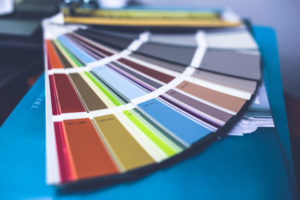For Packaging Design Inspiration, Check Out Your Competitors’ Products
We’re not advocating stealing your competitors’ designs, but your product’s packaging doesn’t exist in a vacuum. If you’re searching for packaging design inspiration, it’s important to take a look at likely shelf neighbours to find the perfect graphics for your own pack.
Packaging Design Interrupts Consumers
The vast majority of purchase decisions are made at the point of sale, and many (if not most) are driven by habit. Supermarkets and other large retail environments produce the shopping equivalent of “highway hypnosis”, so interrupting the consumer’s habit-driven shopping pattern is necessary to grab their attention.
Packaging Design And Text / Graphic Elements
There are dozens of factors that go into choosing text and graphic elements for a pack, but examining your shelf competition can help you pinpoint ways to stand out. Do your competitors include educational graphics demonstrating the use of the product? What kind of label claims (subject to any applicable regulatory requirements) do they make? If your product is not substantially different from its competition, use your text and graphic elements to emphasize branding. If your product has unique qualities or benefits, use text and graphic elements to emphasize why it’s different.
Example: If your competitors tend to have text-heavy packaging designs, consider a minimalist approach.
Packaging Design And Colour
The biggest factor with regard to visibility (of anything, not just packaging!) is colour contrast. A consumer scanning a wall of blue products for a recognized brand name won’t stop to consider your turquoise package. Look to the other side of the colour wheel from your competitors’ designs to increase shelf impact and visibility.

Example #1: If your competitors both use warm colour palettes, a cool blue or green package design can help stand out on the shelf.
Exception: Some colours just won’t work with your product. A spicy marinade may stand out in hot pink packaging, but chances are it won’t appeal to your target consumer.
Example #2: If your competitors already use highly contrasting colour palettes, a black or white package can help draw the eye toward your product.
Exception: Some studies have shown that white packaging performs poorly on lower shelves (but better at eye level or above). This is perhaps because a white package may “blend in” with the floor below eye level.
Packaging Design And Shape
New graphics are one thing, an entirely new package design is quite another. Still, if you’re ready to invest in a big change, shape is a very effective way to stand out from your shelf competition.
Is the shape or structure of your competitor’s package functional and convenient? Does it allow for reuse of the product? If it does any of these things poorly (or not at all), can your product do better?
Example: In terms of revolutionizing package design, one of the biggest trends we’ve seen in the past few years is cereals, snacks and crackers movng to stand-up pouches, often with metallized films that not only protect the contents but allow for compelling design options.
One Time Your Packaging Design Shouldn’t Stand Out
If the market leaders in your category share a certain design element, incorporating that element into your packaging design can help position your product as a major player in that space.
Example: If your competitors all use a window pouch to display their product, you should consider doing the same—faced with a choice between a product they can see and a product they can’t, consumers may assume the “hidden” product is of lower quality.
Take Your Packaging Design For A Test Drive
Whenever you’re trialling an updated package, obtaining hand samples allows your team to understand and test your packaging options, and determine whether you can successfully produce the product on your new or existing packing lines.
Questions? Ask The Packaging Design Experts
Emmerson Packaging has 60 years’ experience in high-impact packaging design. Whether you want to bring your pack in line with the competition or stand out dramatically on the shelf, we can help you design the best package for your product—for your consumers, packers, transporters, warehousers, and yourself.


